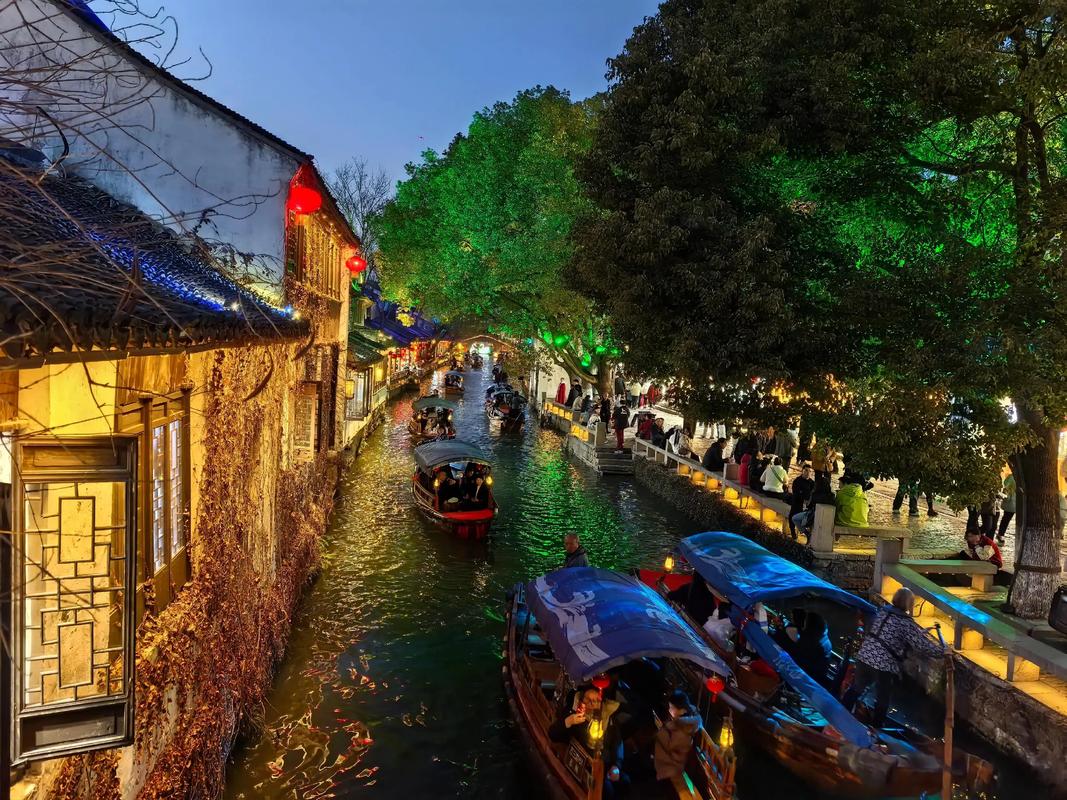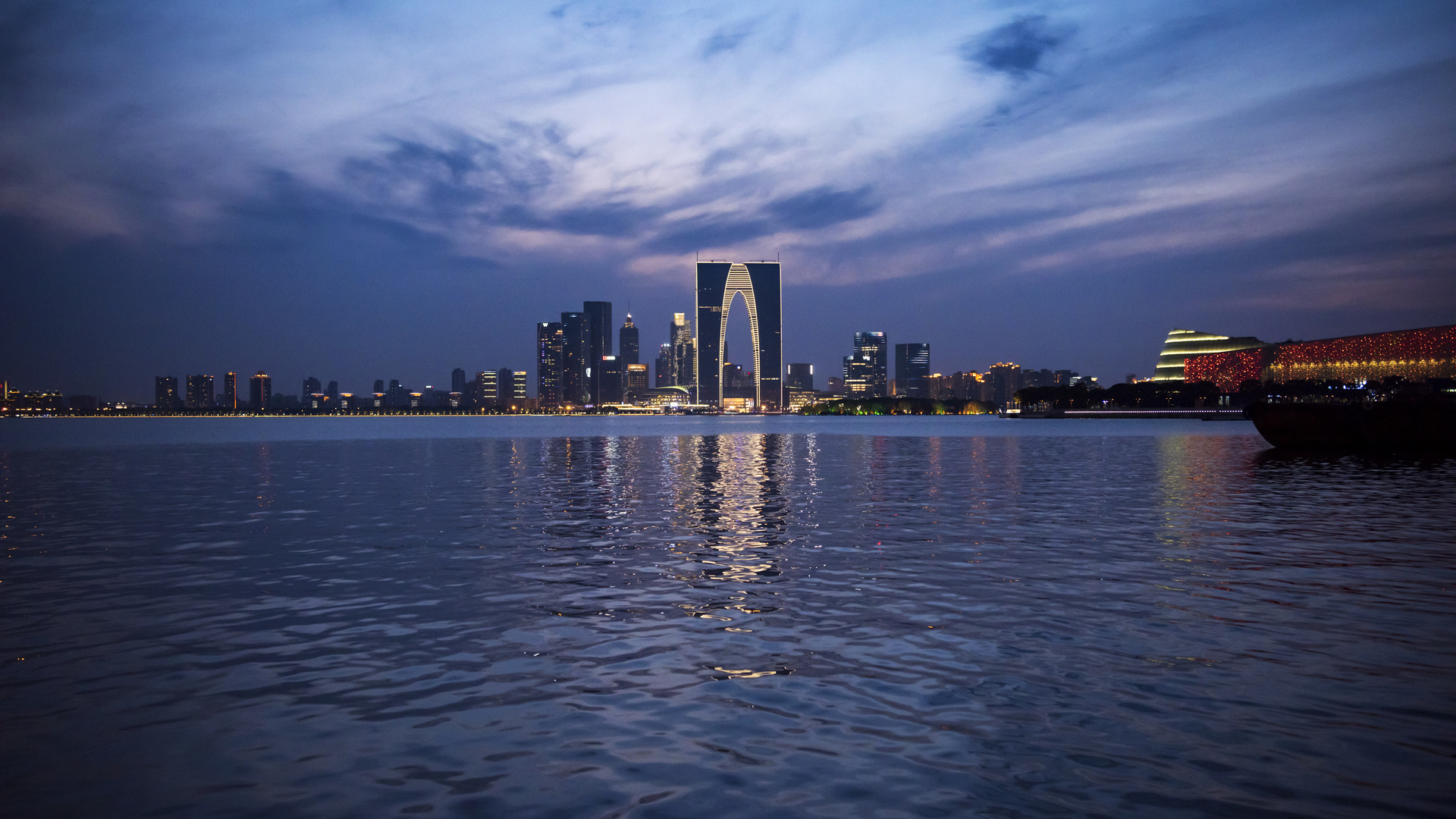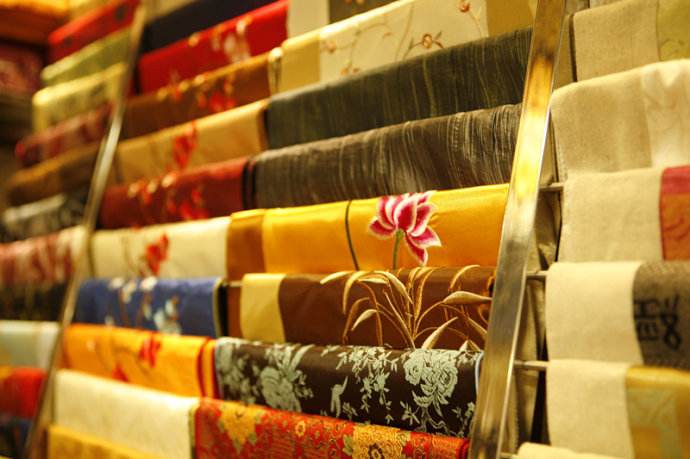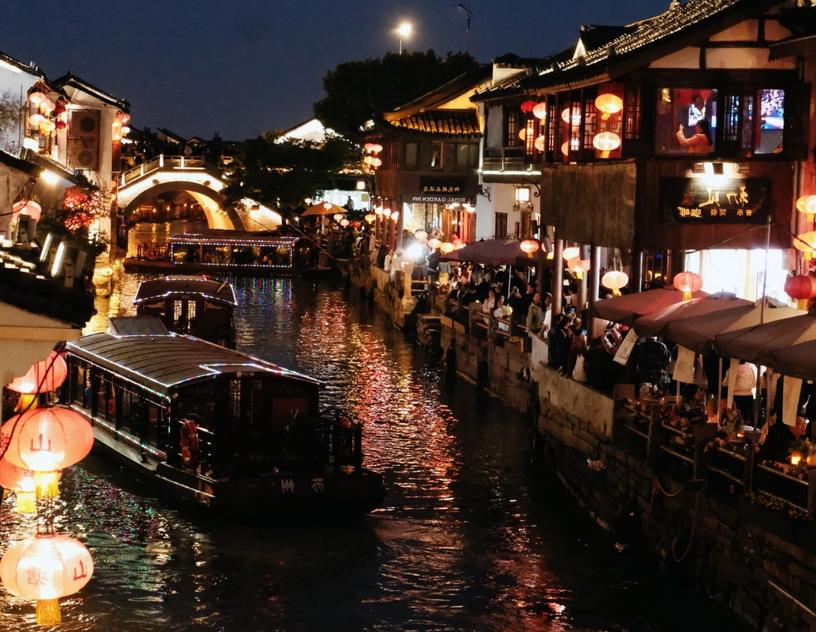✨ Summary
Morning mist curls above quiet canals. A black-awning boat glides beneath a stone bridge; elders sip tea by the water, speaking softly in Suzhou tones. Along cobblestones, life unfolds slowly—reflections, ripples, and rhythm.
These are the Jiangnan water towns—Zhouzhuang, Tongli, and Luzhi—each with its own story of bridges, gardens, and timeless calm.
Zhouzhuang: China’s First Water Town
Halfway between Suzhou and Shanghai, Zhouzhuang gained fame from artist Chen Yifei’s Memory of Hometown, its “Twin Bridges” forever mirrored in water. Over half the town’s homes date to the Ming and Qing dynasties—white walls, dark roofs, and wooden benches where locals chat by the canal.
Highlights
- Twin Bridges – Zhouzhuang’s most iconic view, glowing at sunrise and sunset.
- Shen House – Grand Ming mansion of merchant Shen Wansan.
- Zhang House – Elegant corridors built by a general’s descendants.
- Fu’an Bridge – Bridge-pavilion with the best canal views.
Travel Tips
Go early for misty light. Sip Biluochun tea by the water and stay for a nighttime pingtan storytelling show.
Tongli: Slow Life by the Water
Quieter and more lived-in, Tongli remains a true residential town of 15 canals and 49 bridges. Locals say, “Every home faces water; every door opens to a boat.”
Highlights
- Tuisi Garden – UNESCO gem built for “retreat and reflection.”
- Three Bridges – Wedding tradition for blessings of peace and joy.
- Jiayin & Chongben Halls – Masterpieces of wood and stone craft.
Travel Tips
Stroll Tuisi Garden in morning light, wander alleys with drying laundry and children playing, and taste local favorites like zhuangyuan pig trotter or wadi crisps.
Luzhi: Town of Bridges and Quiet Grace
Just 25 km from Suzhou, Luzhi feels untouched by time. Known for its 72 ancient bridges, it once inspired educator Ye Shengtao, whose home now serves as a small museum.
Highlights
- Baosheng Temple – Houses Tang-era arhat sculptures.
- Three Bridges in Alliance – Walk them in order for good fortune.
- Wansheng Rice Shop – A living museum of Jiangnan trade.
Travel Tips
Visit the morning market for handmade snacks. Take a boat ride at dusk and listen as the boatwoman sings Jasmine Flower in the local dialect.
Bridges & Songs: The Heart of Jiangnan
Bridges here are more than crossings—they’re poetry in stone. Villagers carry shoulder poles at dawn; boats pass under lanterns at dusk. Their mirrored arches form perfect circles on still water.
On the canals, boatwomen sing folk tunes that blend with oar and ripple—music, motion, and water becoming one.
Teahouses & Time
By the water, teahouses are Jiangnan’s open living rooms. Order a pot of Biluochun, watch reflections dance on the wall, and let the rhythm of life slow down. Elders play chess; travelers sip tea and listen to pingtan—tea, sound, and scenery in harmony.
Living Heritage
White walls, black tiles, carved beams, and open courtyards—Jiangnan homes reflect quiet elegance. Today, many have become guesthouses or galleries, inviting visitors to live this tranquil beauty.
🌿 Final Thought
In Zhouzhuang, Tongli, and Luzhi, time doesn’t stop—it simply flows with the water. Between bridges, songs, and tea, travelers discover the essence of Jiangnan: beauty lives in calmness.




